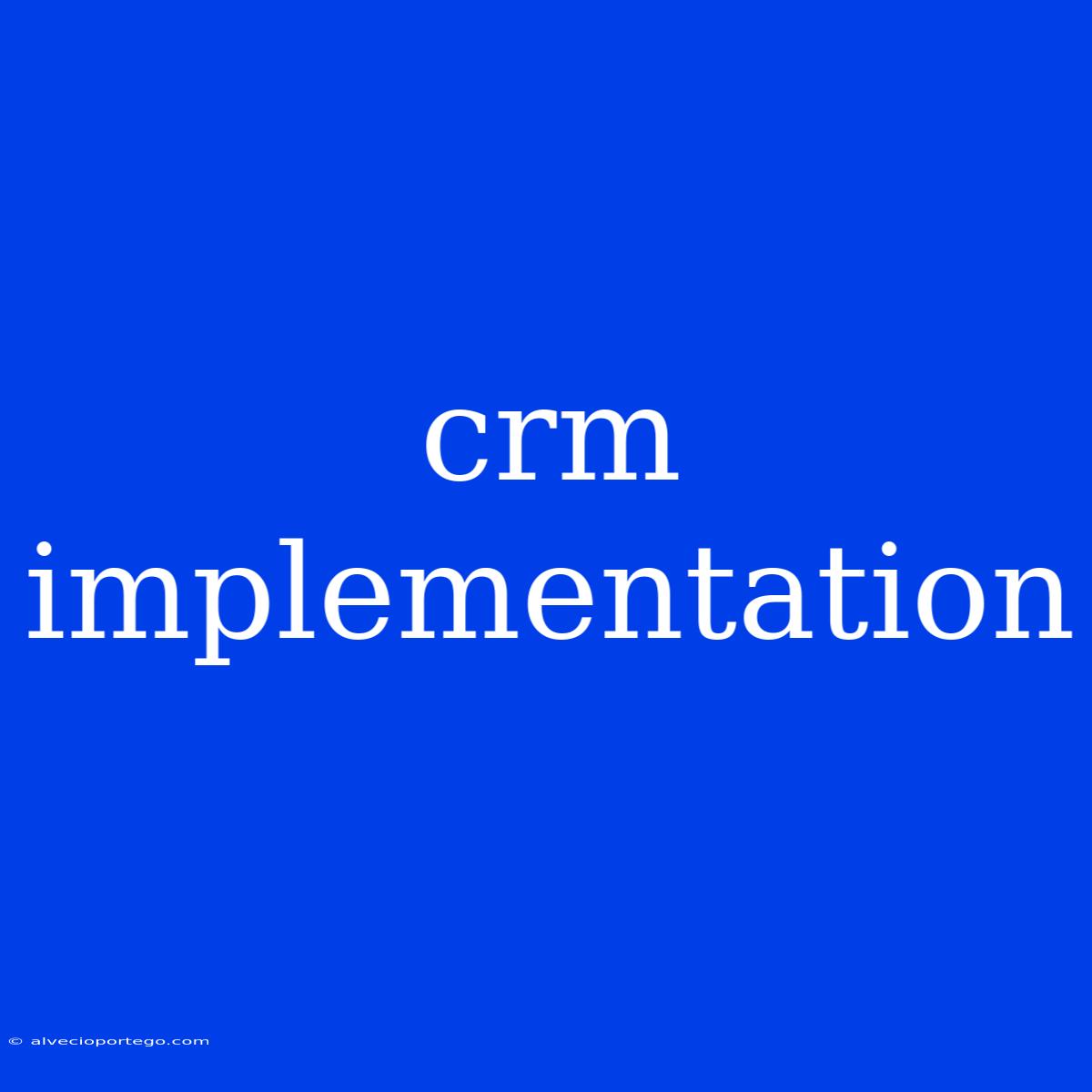CRM Implementation: A Guide to Success
Customer Relationship Management (CRM) systems are powerful tools that can help businesses manage and improve their relationships with customers. However, implementing a CRM system can be a complex and challenging process. This article will guide you through the essential steps involved in a successful CRM implementation.
1. Define Your Objectives and Requirements
Before you start looking for a CRM system, you need to define your objectives and requirements. What do you want to achieve with a CRM system? Do you want to improve customer service, increase sales, or automate marketing tasks? Once you know your goals, you can start to research different CRM systems and find one that meets your needs.
2. Select the Right CRM System
There are many different CRM systems available on the market, each with its own strengths and weaknesses. You need to choose a system that is:
- Affordable: The system should fit your budget.
- Scalable: The system should be able to grow with your business.
- User-friendly: The system should be easy for your team to use.
- Integratable: The system should integrate with your other business systems.
3. Plan Your Implementation
Once you've chosen a CRM system, you need to plan your implementation. This includes:
- Training: Your team will need training on how to use the new CRM system.
- Data migration: You'll need to migrate your existing customer data into the new CRM system.
- Customization: You may need to customize the CRM system to meet your specific business needs.
- Testing: You need to test the CRM system thoroughly before going live.
4. Launch Your CRM System
Once the CRM system is implemented, you need to launch it to your team. This includes:
- Communication: Communicate the launch date and any changes to your team.
- Support: Provide ongoing support to your team as they use the new CRM system.
- Monitoring: Monitor the system's performance and make adjustments as needed.
5. Optimize Your CRM System
After you've launched the CRM system, you need to optimize it to maximize its effectiveness. This includes:
- Reviewing your processes: Review your CRM processes regularly and make improvements as needed.
- Using analytics: Use CRM analytics to track your progress and identify areas for improvement.
- Getting feedback: Get feedback from your team and customers on how to improve the CRM system.
Key Considerations:
- Integration: Ensure seamless integration with existing systems like email marketing platforms, accounting software, and e-commerce platforms.
- Customization: Tailor the system to your specific business processes and workflows.
- Data Security: Implement robust security measures to protect sensitive customer data.
- User Adoption: Encourage user adoption through clear training, user-friendly interface, and ongoing support.
Conclusion
Implementing a CRM system requires careful planning, execution, and ongoing optimization. By following the steps outlined in this article, you can increase your chances of achieving a successful CRM implementation that improves your customer relationships and drives business growth.

